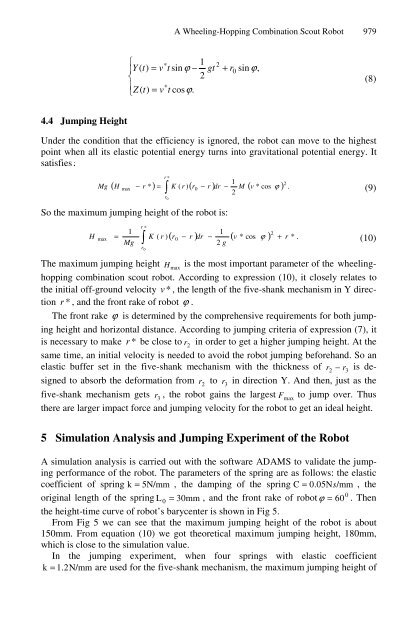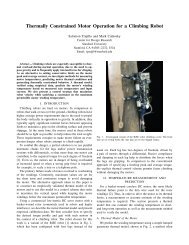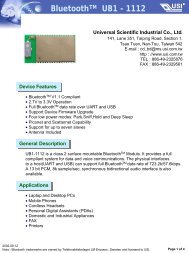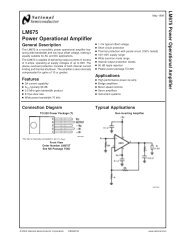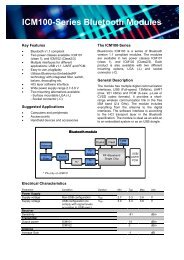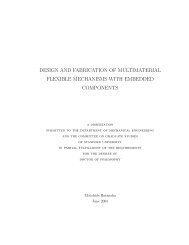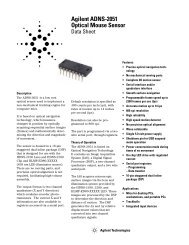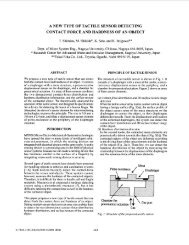A Wheeling-Hopping Combination Scout Robot
A Wheeling-Hopping Combination Scout Robot
A Wheeling-Hopping Combination Scout Robot
You also want an ePaper? Increase the reach of your titles
YUMPU automatically turns print PDFs into web optimized ePapers that Google loves.
A <strong>Wheeling</strong>-<strong>Hopping</strong> <strong>Combination</strong> <strong>Scout</strong> <strong>Robot</strong> 979$ ∗ 1 2! Y ( t)= v t sinϕ− gt + r0sinϕ,#2! ∗" Z ( t)= v t cosϕ.(8)4.4 Jumping HeightUnder the condition that the efficiency is ignored, the robot can move to the highestpoint when all its elastic potential energy turns into gravitational potential energy. ItsatisfiesMg2( H r *) = K ( r )( r − r ) dr − M ( v * cos ϕ ) .maxr ∗−+So the maximum jumping height of the robot is:r0012(9)Hmax1 r ∗20= K ( r )Mg +r012 g( r − r ) dr − ( v * cos ϕ ) + r * .(10)The maximum jumping height H is the most important parameter of the wheelinghoppingcombination scout robot. According to expression (10), it closely relates tomaxthe initial off-ground velocity v * , the length of the five-shank mechanism in Y directionr * , and the front rake of robot ϕ .The front rake ϕ is determined by the comprehensive requirements for both jumpingheight and horizontal distance. According to jumping criteria of expression (7), itis necessary to make r * be close to r 2in order to get a higher jumping height. At thesame time, an initial velocity is needed to avoid the robot jumping beforehand. So anelastic buffer set in the five-shank mechanism with the thickness of r2 − r3is designedto absorb the deformation from r 2to r 3in direction Y. And then, just as thefive-shank mechanism gets r 3, the robot gains the largest Fmaxto jump over. Thusthere are larger impact force and jumping velocity for the robot to get an ideal height.5 Simulation Analysis and Jumping Experiment of the <strong>Robot</strong>A simulation analysis is carried out with the software ADAMS to validate the jumpingperformance of the robot. The parameters of the spring are as follows: the elasticcoefficient of spring k = 5N/mm , the damping of the spring C = 0.05Ns/mm, the0original length of the spring L 0 = 30mm , and the front rake of robotϕ= 60 . Thenthe height-time curve of robot’s barycenter is shown in Fig 5.From Fig 5 we can see that the maximum jumping height of the robot is about150mm. From equation (10) we got theoretical maximum jumping height, 180mm,which is close to the simulation value.In the jumping experiment, when four springs with elastic coefficientk = 1.2N/mm are used for the five-shank mechanism, the maximum jumping height of


